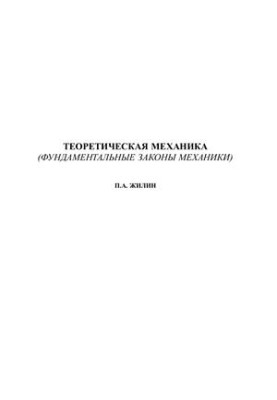Theoretical mechanics (fundamental laws of mechanics)
 Instant download
Instant download
after payment (24/7)
 Wide range of formats
Wide range of formats
(for all gadgets)
 Full book
Full book
(including for Apple and Android)
The aim of the author is to present modern rational mechanics in the form in which it was created and improved over three millennia by many generations of creators, including those who are not accepted to be elevated to the rank of greats. At the same time, the author sought to be extremely simple and carefully avoided unnecessary mathematical formalization. It is generally accepted that classical mechanics is based on Newton's three laws, although the incompleteness of Newtonian mechanics has been specified by L.. Euler at the end of the 18th century. More general Eulerian mechanics with active application of basic concepts of thermodynamics has been widely used in scientific research since the late 19th century, but has not yet been reflected in existing textbooks. The limitations of Newtonian mechanics are clearly manifested in its inability to give a full description of the phenomena of electromagnetism, and at the beginning of the 20th century they were added to the phenomena that are now commonly described in the framework of quantum physics. It has now become obvious that the main reason for the limitations of Newtonian mechanics is to ignore in it the spinor movements that play a major role in the microcosm. Therefore, the transition of mechanics to the foundation of Eulerian mechanics has become an urgent necessity. Currently, the foundation of mechanics has been significantly expanded and strengthened. In this course, the author saw his task in presenting this strengthened foundation of mechanics in the clearest possible form. At the same time, it was important to emphasize the evolutionary and continuous nature of the development of the basic ideas of mechanics.
LF/963870026/R
Data sheet
- Name of the Author
- Жилин П.А.
- Language
- Russian

























